Drip Irrigation System Maintenance
by Stuart Spaulding,
CLIA Certified Landscape Irrigation Auditor Training & Communications Manager at DIG Corp.
Drip/low-volume irrigation system maintenance is more necessary, time consuming, and involved than maintenance of conventional sprinkler systems. The primary reasons are that sprinkler heads are more visible than drip emitters, (and associated problems are more apparent) and that drip systems have some additional components not normally installed on sprinkler systems.
But contrary to popular belief, drip systems can be relatively trouble free for many years, particularly if certain maintenance checks and steps are performed periodically, and especially at the beginning and end of each season.
The first component to check is the Y filter, which is normally found at the beginning of the system, right after the control valve. Filters are often neglected and never cleaned. With the system valve closed, unscrew the filter cover and remove, inspect, and if necessary clean the screen or disk element with a brush or hose. If the screen element is damaged it should be replaced, preferably with one with a stainless steel screen.
It’s also necessary to flush out the lateral lines on a regular basis. To do so, open the system control valve and unscrew the flush cap (or other end closure fitting) at the end of the ½” or ¾” poly tubing. Let the water run at full volume for a minute or two, making sure the water runs clear. If multiple line ends are present on a single system, flush them out one at a time.
After flushing the lines, leave the system running, and walk the entire drip zone line, and check each emitter (if visible) and/or micro-sprinkler for leaks, clogs, and correct flow. Clogged or malfunctioning emitters should be replaced with emitters with the same flow rate. Clogged or damaged micro-sprinklers are easier to check, and can sometimes be removed, flushed and re-installed. Check all compression or insert fittings for leaks and replace with the appropriate size if necessary. Sub-surface emitters are not visible but verify that there are no gaps in the wetted area on the soil surface.
Finally if there is a pressure regulator installed on the system, make sure it is functioning by installing a pressure gauge at the end of the line and checking the dynamic pressure. If the pressure is above the regulators limit, the regulator should be repaired or replaced.

